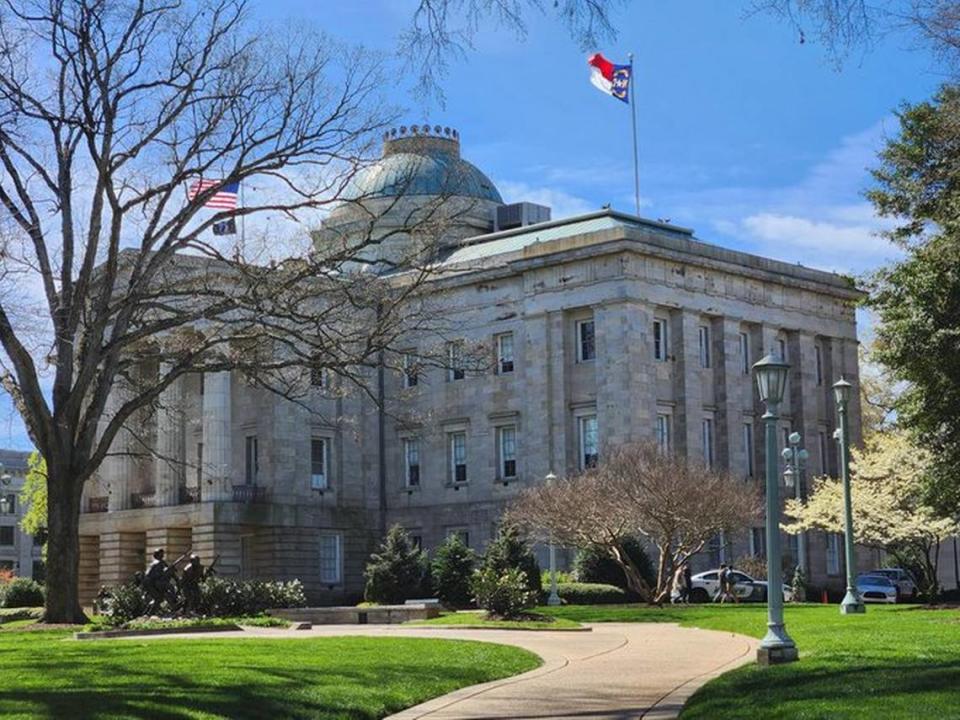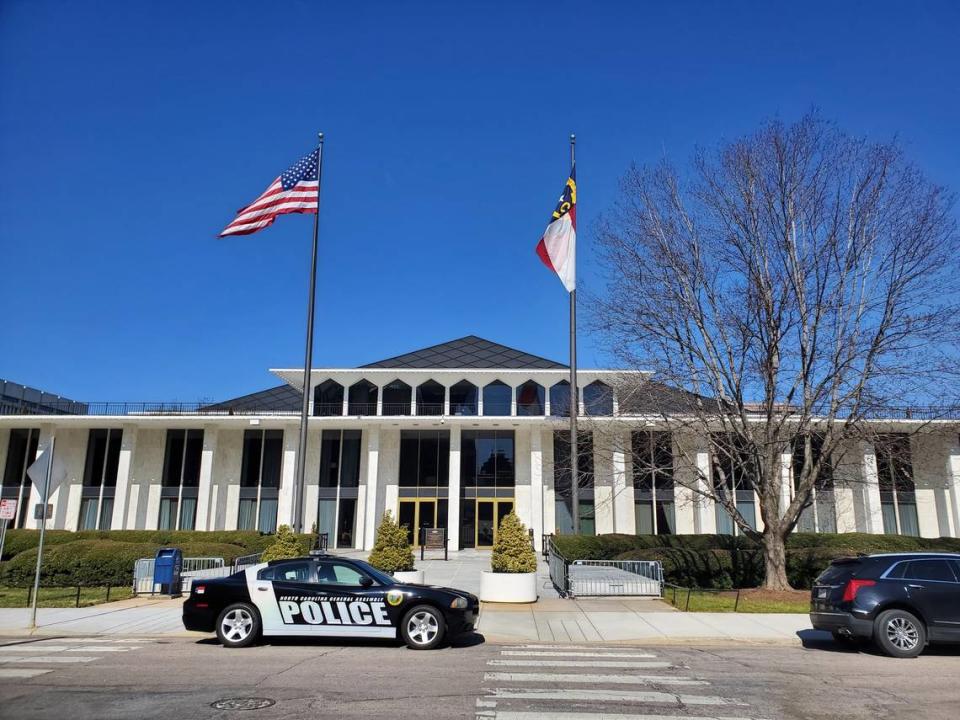North Carolina’s blue Capitol dome will change colors this year
The blue copper dome on North Carolina’s historic state Capitol building will be replaced this year. That means the color will change, too. For awhile, anyway.
The Capitol roof, including the dome, is copper, so it will be the color of a penny when it is new.
The Capitol building’s blue dome has become symbolic of the state itself, the capital city and the legislature. The General Assembly moved to a new building 60 years ago, but the Capitol remains the center of attention.
Paul Coble, the legislative services officer at the General Assembly, is involved in the oversight of buildings on the Capitol Square, which includes the Legislative Building, the Legislative Office Building and the Capitol itself.
He said the roof will be replaced this year, possibly starting this summer.
As part of the 2021 state budget, money was allocated to fix the Capitol roof as part of needed maintenance. The cost is about $10 million, Coble told The News & Observer in an interview.
The dome is part of the copper roof, which turned blue over several years. Oxidation, the process of copper changing color to blue and green over time as it reacts to oxygen in the air, can be seen quite significantly on the Statue of Liberty in New York City, which changed color over at least 20 years.

History of the Capitol building
Enslaved people built the Capitol building in the 1830s. It opened in 1840 after adjustments were made by multiple architects. The Capitol cost $532,680.
The building has granite exterior walls that came from a quarry in southeastern Raleigh. It is 97.5 feet tall from the floor to the honeysuckle crown of the dome and was modeled after ancient Greek buildings, according to the N.C. Division of State Historic Sites and Properties.
When the Legislative Building on Jones Street opened in 1963 a block away, lawmakers stopped convening at the Capitol. General Assembly sessions are held at the Legislative Building except for maybe once a year or so, when they convene at the Capitol for ceremonial sessions, like they did in 2019 to commemorate the 75th anniversary of the June 6 D-Day invasion during World War II. The Capitol building today has offices for the governor and is operated as a state historic site with tours.

How the dome will change in 2023
Raymond is the architectural and engineering firm being used for the Capitol roof, Coble said. Raymond, headquartered in Georgia, also designed the Legislative Building’s roof replacement in 2016 and 2017, as well as masonry work on the building.
Coble said the Capitol roof project will also mean a less obstructed view of the top of the building. He pointed out the two big air handlers that are visible on the roof of the east and west sides of the building, which, of course, were not part of the 1840 design.
“(The air handlers) will come off, and we’re going to redo the HVAC system. They won’t have to use those air handlers. So it’ll restore some of the original look of the building,” he said.
While the work is being done, there will be some fencing and scaffolding in place. Coble doesn’t anticipate that people will need to vacate the Capitol.
“We did (the Legislative Building) roof and we didn’t remove anybody,” he said. “We just finished the roof in the LOB (Legislative Office Building) and we didn’t remove anybody. That’s not to say there won’t be some noise and other inconvenience.”
“It’s the most important building in the state of North Carolina. A little inconvenience right now to preserve it will pay off dividends in the long haul,” Coble said.
When the Legislative Building’s copper roof was replaced, he said, the color changed within a year.
Coble said the copper color “won’t last long. It changes quickly. I think it took about a year for us to see a change here.”
Similarly, House Speaker Tim Moore told The N&O that, like the Legislative Building roof, the copper color won’t last.
“And then it’ll turn green. The same thing happened here, it didn’t take long,” Moore said.
But his preference, Moore quipped, would be a certain shade of blue.
“It should be Carolina blue. Not for political reasons, of course, but for our preeminent institution of higher learning in our state,” Moore said.
Moore is a UNC-Chapel Hill graduate.
Under the Dome
It’s not just a building. Under the Dome has also been The News & Observer’s brand of state politics coverage since 1934. For more North Carolina government and politics news, subscribe to the Under the Dome politics newsletter from The News & Observer and the NC Insider, follow Under the Dome on Twitter and listen to our weekly Under the Dome podcast at campsite.bio/underthedome or wherever you get your podcasts.

